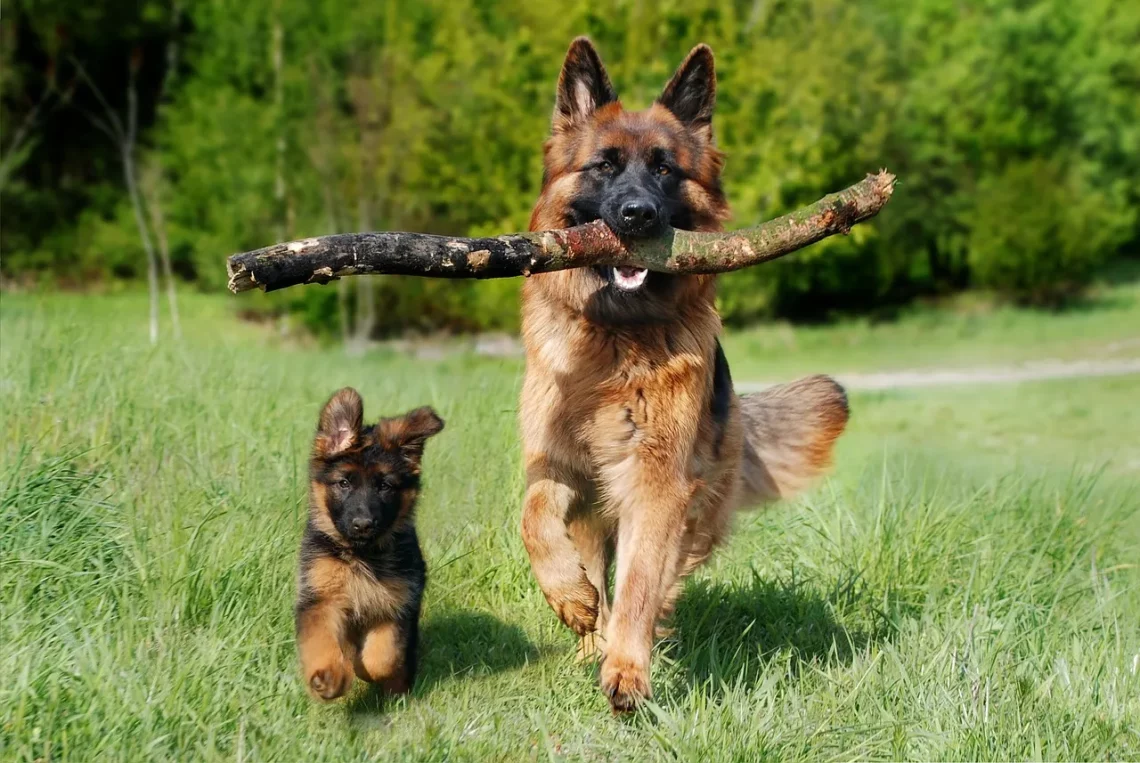
Why Is My Dog Panting at Night? Common Causes and Solutions
Dogs are often seen as comforting companions, providing emotional support and a sense of security to their owners. However, when a beloved pet starts exhibiting unusual behaviors, such as excessive panting at night, it can be a source of concern for pet owners. Panting is a natural behavior for dogs; they do it to regulate their body temperature, express excitement, or even convey anxiety. However, when it occurs during the night when the dog is supposed to be resting, it can lead to sleepless nights for both the pet and owner.
Understanding the reasons behind this behavior is essential for ensuring your dog’s well-being. While some instances of nighttime panting can be benign, others may indicate underlying health issues that require attention. Recognizing the common causes of nighttime panting can help you determine whether your dog’s behavior is normal or if it requires intervention. It’s crucial to be observant and to assess the overall context of your dog’s behavior, including their environment, diet, and emotional state. In this article, we will explore various factors that might contribute to your dog’s nighttime panting and provide insights on how to address them effectively.
Understanding Normal Dog Behavior
To properly address nighttime panting, it’s important to first understand what constitutes normal behavior for dogs. Dogs, like humans, have a range of responses to different stimuli, and their behavior can vary based on numerous factors including breed, age, and individual personality. Panting is a typical response to heat or exertion, serving as a means for dogs to cool down.
However, panting can also occur when dogs are stressed or anxious. For example, a dog may pant heavily after a long walk, during a thunderstorm, or in response to loud noises. In these situations, the panting is a natural response and may subside once the triggering factor is removed.
It’s also worth noting that some breeds are more prone to panting than others. Brachycephalic breeds, such as Bulldogs and Pugs, may pant more frequently due to their unique anatomical structures that make breathing more difficult. Understanding your dog’s breed characteristics can provide context for their behavior.
Moreover, it’s crucial to observe your dog’s panting in the context of other behaviors. If your dog is panting but also appears relaxed and content, it may be nothing to worry about. However, if the panting is accompanied by signs of distress, such as pacing, whining, or an inability to settle down, it’s important to investigate further.
Overall, recognizing what is typical for your dog will help you determine when their panting crosses the line into something that might require your attention.
Environmental Factors Affecting Panting
The environment plays a significant role in a dog’s behavior, including nighttime panting. Various elements in your dog’s surroundings can lead to increased anxiety or discomfort, prompting them to pant.
Temperature is one of the most obvious factors. Dogs can become overheated, especially in warm weather or poorly ventilated spaces. Panting is their way of regulating body temperature, and if your dog is panting excessively at night, it may be due to an overheated environment. Ensuring your dog has access to a cool, comfortable area to sleep can help alleviate this issue.
Noise is another environmental factor that can lead to panting. Loud sounds from fireworks, thunderstorms, or even household appliances can trigger anxiety in dogs. If your dog is sensitive to noise, consider creating a quiet, cozy space for them with blankets and their favorite toys. White noise machines or calming music can also help drown out unsettling sounds, reducing your dog’s anxiety and subsequent panting.
Additionally, changes in their environment can impact a dog’s sense of security. Moving to a new home, introducing new pets, or even changes in your routine can cause anxiety in dogs. In such cases, providing reassurance and maintaining a steady routine can help ease their worries.
Ultimately, being aware of your dog’s environment and making adjustments as needed can significantly reduce nighttime panting, leading to a more peaceful sleep for both you and your furry friend.
Health Issues That May Cause Panting
While environmental factors often contribute to nighttime panting, it’s essential to consider potential health issues that could be at play. Numerous medical conditions can lead to excessive panting, and recognizing these signs can be crucial for your dog’s health and well-being.
One common health issue is obesity. Overweight dogs may find it more challenging to breathe, especially at night when they are at rest. This can lead to increased panting as their bodies work harder to obtain the necessary oxygen. If you suspect your dog is overweight, consult your veterinarian about developing a weight management plan.
Respiratory conditions are another significant concern. Issues such as asthma, bronchitis, or other lung diseases can lead to difficulty breathing, resulting in panting. If your dog exhibits signs of labored breathing, coughing, or lethargy in addition to panting, it’s crucial to seek veterinary attention right away.
Heart problems can also manifest as excessive panting. Conditions such as congestive heart failure may cause dogs to pant due to reduced oxygen flow. If you notice your dog panting at rest or showing signs of fatigue during minimal activity, a veterinary visit is warranted.
Finally, pain or discomfort can lead to panting as dogs attempt to cope with their distress. Conditions such as arthritis or injuries may cause discomfort that manifests in behaviors like panting.
If your dog’s nighttime panting persists or is accompanied by other concerning symptoms, it’s essential to consult a veterinarian for a thorough evaluation and appropriate care.
Behavioral Solutions to Reduce Nighttime Panting
Addressing nighttime panting often requires a multi-faceted approach that combines understanding the underlying causes with implementing behavioral solutions. One effective strategy is to create a calming bedtime routine for your dog. Just as humans benefit from winding down before sleep, dogs can also benefit from a consistent routine that signals it’s time to relax.
Consider engaging in calming activities before bedtime, such as gentle playtime, brushing, or even training sessions that focus on relaxation commands. This can help your dog transition from a state of activity to a more restful state. Additionally, establishing a comfortable sleeping environment is crucial. Ensure your dog has a designated space that is quiet, cozy, and free from disturbances.
If your dog is particularly anxious, consider incorporating calming aids. Products such as anxiety wraps, calming collars, or pheromone diffusers can help create a soothing atmosphere. Natural supplements designed to reduce anxiety can also be beneficial, but always consult your veterinarian before introducing any new products.
Lastly, training your dog to respond to commands can be a helpful tool in managing nighttime anxiety. Teaching commands like “settle” or “stay” can help redirect your dog’s focus from anxiety-inducing stimuli to a more relaxed state. Positive reinforcement for calm behavior can go a long way in helping your dog learn to cope with their nighttime anxiety.
By implementing these behavioral strategies, you can help your dog feel more secure and comfortable during the night, reducing the likelihood of excessive panting.
In conclusion, while nighttime panting in dogs can be concerning, understanding the various causes—from environmental factors to potential health issues—can help you address the situation effectively. Observing your dog’s behavior, creating a comforting environment, and consulting with a veterinarian when necessary are essential steps in ensuring your dog’s health and well-being.
**Disclaimer:** This article is not intended as medical advice. Always consult with your veterinarian for any health-related concerns regarding your pet.




